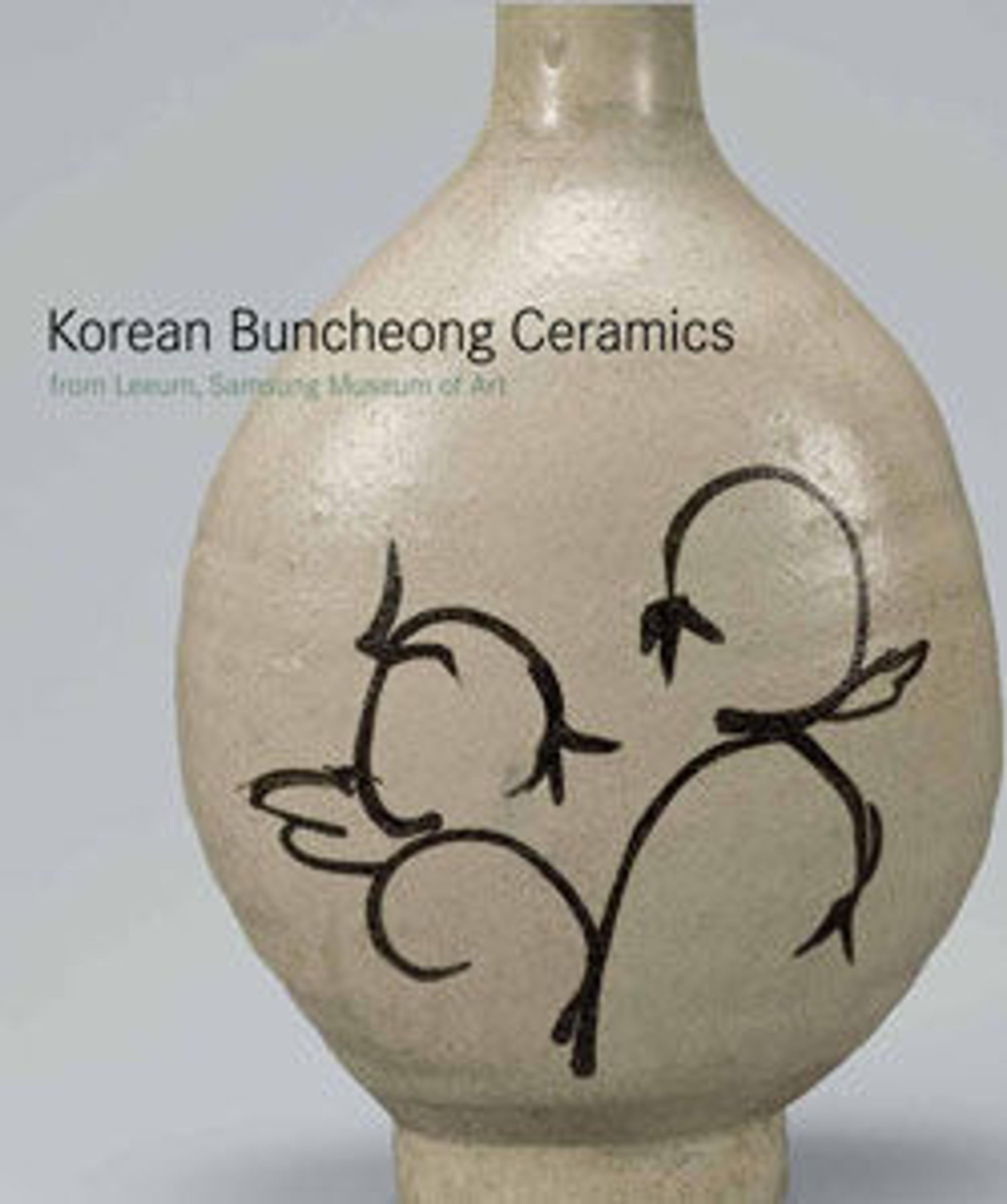Dish
A quintessential example of Utsutsugawa ware, this dish was formed on the wheel, then pressed over a mold to shape the foliate rim, and, finally, decorated with white slip and a painted ginkgo-leaf design. The meticulously brushed slip follows the turn of the potter's wheel, revealing the method of its application. Two large, nearly symmetrical ginkgo leaves with overlapping and entwined stems completely cover the interior of the dish. Superbly executed in iron-oxide pigment and copper-green glaze (and sheathed entirely with a thin layer of clear glaze), they create a design that is almost abstract. Compared to the earthy and exuberant decoration on Takeo Karatsu ware, which also combines iron-brown painting and copper-green glaze, Utsutsugawa pieces are subtler, smoother, and exquisite.
Artwork Details
- Title: Dish
- Period: Edo period (1615–1868)
- Date: kiln in operation ca. 1691–1749
- Culture: Japan
- Medium: Stoneware with brushed white slip and copper-green and iron-brown glazes (Utsutsugawa ware)
- Dimensions: H. 1 3/4 in. (4.4 cm); Diam. 7 1/4 in. (18.4 cm)
- Classification: Ceramics
- Credit Line: The Harry G. C. Packard Collection of Asian Art, Gift of Harry G. C. Packard, and Purchase, Fletcher, Rogers, Harris Brisbane Dick, and Louis V. Bell Funds, Joseph Pulitzer Bequest, and The Annenberg Fund Inc. Gift, 1975
- Object Number: 1975.268.589
- Curatorial Department: Asian Art
More Artwork
Research Resources
The Met provides unparalleled resources for research and welcomes an international community of students and scholars. The Met's Open Access API is where creators and researchers can connect to the The Met collection. Open Access data and public domain images are available for unrestricted commercial and noncommercial use without permission or fee.
To request images under copyright and other restrictions, please use this Image Request form.
Feedback
We continue to research and examine historical and cultural context for objects in The Met collection. If you have comments or questions about this object record, please complete and submit this form. The Museum looks forward to receiving your comments.
